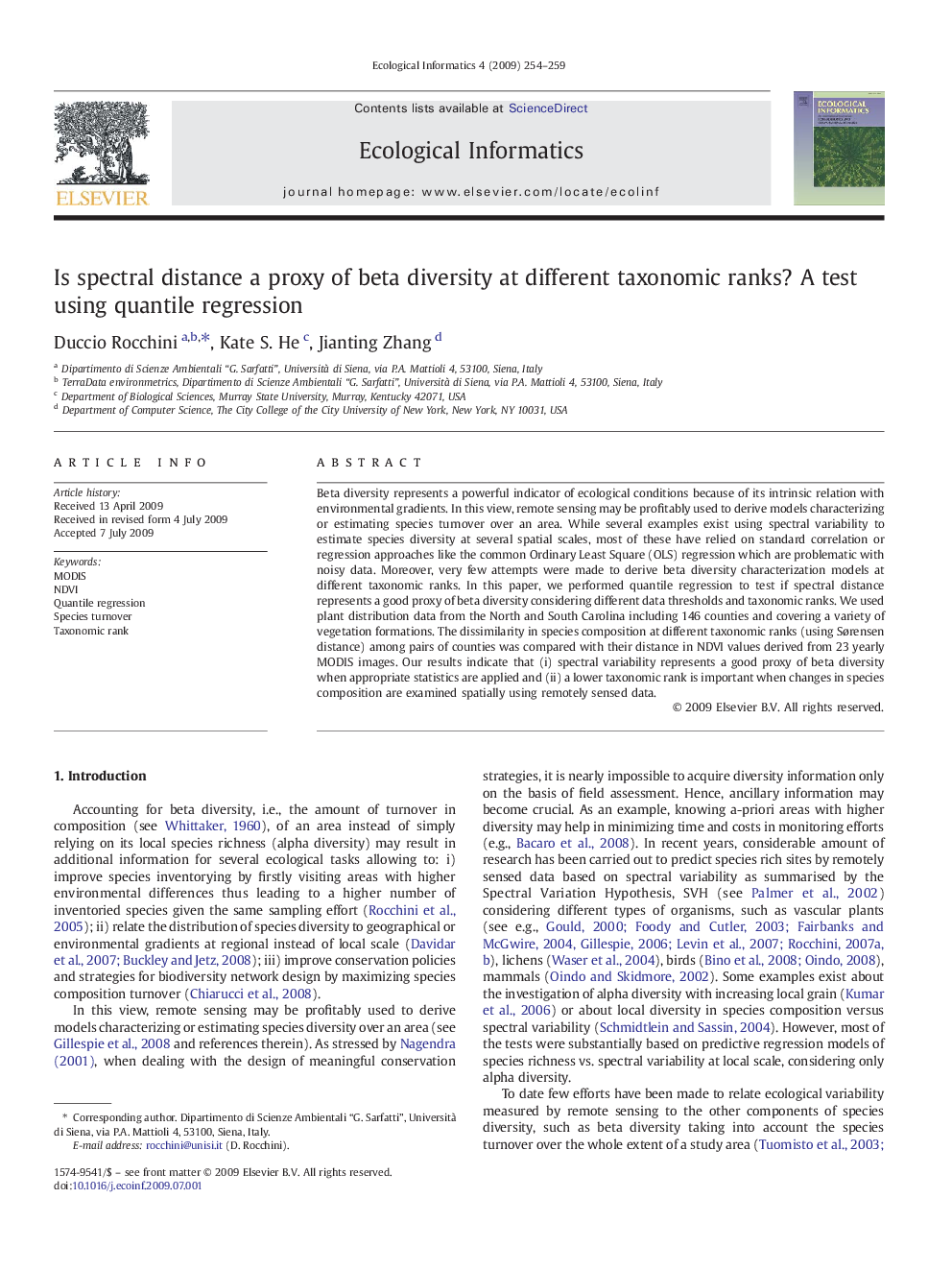| Article ID | Journal | Published Year | Pages | File Type |
|---|---|---|---|---|
| 4375232 | Ecological Informatics | 2009 | 6 Pages |
Abstract
Beta diversity represents a powerful indicator of ecological conditions because of its intrinsic relation with environmental gradients. In this view, remote sensing may be profitably used to derive models characterizing or estimating species turnover over an area. While several examples exist using spectral variability to estimate species diversity at several spatial scales, most of these have relied on standard correlation or regression approaches like the common Ordinary Least Square (OLS) regression which are problematic with noisy data. Moreover, very few attempts were made to derive beta diversity characterization models at different taxonomic ranks. In this paper, we performed quantile regression to test if spectral distance represents a good proxy of beta diversity considering different data thresholds and taxonomic ranks. We used plant distribution data from the North and South Carolina including 146 counties and covering a variety of vegetation formations. The dissimilarity in species composition at different taxonomic ranks (using Sørensen distance) among pairs of counties was compared with their distance in NDVI values derived from 23 yearly MODIS images. Our results indicate that (i) spectral variability represents a good proxy of beta diversity when appropriate statistics are applied and (ii) a lower taxonomic rank is important when changes in species composition are examined spatially using remotely sensed data.
Related Topics
Life Sciences
Agricultural and Biological Sciences
Ecology, Evolution, Behavior and Systematics
Authors
Duccio Rocchini, Kate S. He, Jianting Zhang,
